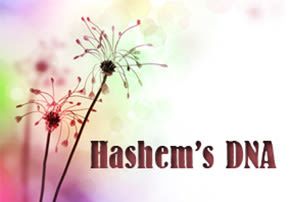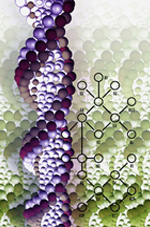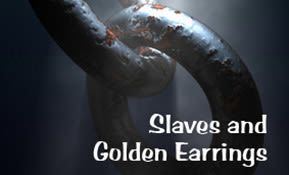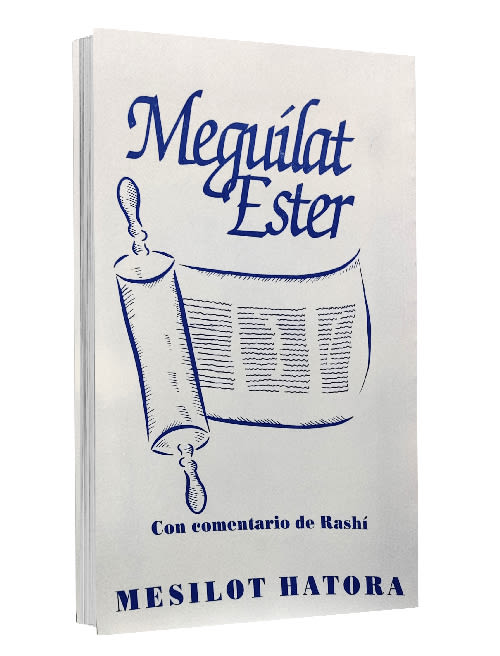
Vayishlach: Hashem’s DNA
The lesson of Dinah teaches us that no matter what a Jewish woman may have done in her past, there is a place within her soul that remains completely pure.

Parshat Vayishlach
The story of Dinah teaches us how careful a Jewish woman must be to protect herself against harassment. Rabbi Ezriel Tauber compares the woman to a diamond and the man to a ring. A ring without a diamond has very little value, yet a diamond without a ring although it has great value, can easily get lost. Therefore, it must be kept in a secure place.
LIKE MOTHER LIKE DAUGTHER
“Dinah the daughter of Leah, whom she bore to Ya’acov went out to see the daughters of the land” (Bereshit 34:1). Abarbanel asks: “Why do we need this detailed description of Dinah?” Was there another Dinah that it was necessary to state “daughter of Leah whom she bore unto Ya’acov?” Rashi answers that the saying “like mother like daughter” originally applied to Dinah. She is called the daughter of Leah since she, too, was outgoing, as it says, “Leah went out towards him” (Bereishit 30:16).
This comparison does not come to denigrate Dinah, as Abarbanel explains: At first, when Ya’acov intended to marry Rachel, but instead was given Leah, he did not recognize her until the next morning, because of Leah’s modesty (Bereishit 29:25). When she later went out towards Ya’acov and said, “You must come to me” (Bereishit 30:16), her intention was for the sake of Heaven: to bear his children and raise the tribes of Israel. The proof is that she merited, that same night,  to conceive Yissaschar, who represents Torah (Rashi, Bereishit 49:14-15). Dinah, likewise, had no improper intentions; she only wanted to watch the daughters of the land and not the men of the city. She longed to see the clothes and the jewelry of other girls and learn the way of young women, since there were no other girls in Ya’acov’s house. Ohr HaChayim explains that “Dinah went out to see the daughters of the land,” because Shechem had brought girls around Ya’acov’s tent who would play harps and make fanfare in order to entice Dinah.
to conceive Yissaschar, who represents Torah (Rashi, Bereishit 49:14-15). Dinah, likewise, had no improper intentions; she only wanted to watch the daughters of the land and not the men of the city. She longed to see the clothes and the jewelry of other girls and learn the way of young women, since there were no other girls in Ya’acov’s house. Ohr HaChayim explains that “Dinah went out to see the daughters of the land,” because Shechem had brought girls around Ya’acov’s tent who would play harps and make fanfare in order to entice Dinah.
 to conceive Yissaschar, who represents Torah (Rashi, Bereishit 49:14-15). Dinah, likewise, had no improper intentions; she only wanted to watch the daughters of the land and not the men of the city. She longed to see the clothes and the jewelry of other girls and learn the way of young women, since there were no other girls in Ya’acov’s house. Ohr HaChayim explains that “Dinah went out to see the daughters of the land,” because Shechem had brought girls around Ya’acov’s tent who would play harps and make fanfare in order to entice Dinah.
to conceive Yissaschar, who represents Torah (Rashi, Bereishit 49:14-15). Dinah, likewise, had no improper intentions; she only wanted to watch the daughters of the land and not the men of the city. She longed to see the clothes and the jewelry of other girls and learn the way of young women, since there were no other girls in Ya’acov’s house. Ohr HaChayim explains that “Dinah went out to see the daughters of the land,” because Shechem had brought girls around Ya’acov’s tent who would play harps and make fanfare in order to entice Dinah. YA’ACOV’S ONLY DAUGHTER
Rabbeinu Bachaya explains that the reason why the Torah states, “whom she bore unto Ya’acov” is to allude to the fact that Ya’acov was partly to blame for what happened to his daughter. He withheld Dinah from Esav, although she possibly could have made him repent. The Midrash teaches that Ya’acov placed Dinah in a box when Esav came towards him, so that Esav would not put his eyes on her. Hashem said, “You did not want her to marry someone circumcised, she will be taken by someone uncircumcised. You did not want her to be married in a permissive way; she will be taken in a forbidden way” (Bereishit Raba 76:9).
IN DINAH’S PRAISE
“When Shechem, the son of Chamor, the Chivite, prince of the country, saw her; he took her and lay with her, and afflicted her” (Bereshit 24:2). According to Rabbi S. R. Hirsch, although Dinah became defiled, nevertheless, she remained entirely the daughter of Ya’acov. Malbim notes that it says “Shechem saw her” to teach us that it was not Dinah that initiated the conversation. As soon as Shechem saw her, he took her by force. Ramban credits Dinah for not being interested in the prince of the land and describes how she screamed and cried constantly. Otherwise Shechem would not have needed to ask his father “take for me this girl for a wife” (Bereishit 34:4); since the girl was already in his possession and as the prince of the land he had no need to fear that anyone would take her away from him. Yet, because of Dinah’s resistance towards him, he tried to bribe her family to convince her to concede willingly to the match (Ramban, Bereishit 34:12).
THE INSIDES OF THE DAUGHTERS OF THE LAND
In Hebrew, the word “et” is used to indicate that the word following a verb becomes the object of the sentence. Therefore, we would have expected the word “et” in “Dinah went out to see (“et”) the daughters of the land.” Be’er Mayim Chayim notes that the "beith,” which means "in" is used instead of the “et.” This makes the verse read: “Dinah went out to see inside the daughters of the land.” Dinah went out to see the inner depths of the hearts of the gentile girls in order to learn who would be receptive to her influence. She understood that also among the gentiles, there are souls capable of becoming purified and clinging to Israel, as is known from Ruth and other converts. Thus the Torah praises Dinah. She went explicitly to see and not to be seen. She did not care to show off her beauty. However, when Sarah converted women, she did so from within her tent. She waited for the women to come to her. On the other hand, Yael the Kenite also went out and Devorah praised her and called her, “more blessed than women of the tent” (Shoftim 5:24). This teaches us that there is a way for a modest woman to “go out” and benefit the world without being harmed.
HER JEWISH ESSENCE REMAINS PURE
What happened to the child that Dinah conceived from her encounter with Shechem ben Chamor? Targum Yonatan in his translation of Bereishit 41:45 identifies Osenath as “Dinah’s daughter whom she bore to Shechem”. In spite of the tainted nature of her conception, Osenath became the wife of Yosef the tzaddik. As Yosef's soul mate, she was like him, sealed with complete sexual chastity. She moreover merited to become the mother of Efrayim and Menashe, two tribes considered equal in holiness to the sons of Ya’acov. This testifies that the inner essence of Osenath’s mother Dinah remained unaffected and pure even when she was defiled by Shechem (Rav Tzaddok of Lublin, Yisrael Kedushin, 10). The power of her innate holiness is moreover expressed on a global level as she affects the circumcision of the entire city. Dinah’s daughter, Osenath, is the first person through whom it becomes established that the Jewish lineage follows the mother. In this way, Dinah teaches us that no matter what kind of experiences a Jewish woman may have gone through in her past; there is a place within her soul that remains completely intact and pure in its holiness. This holy spark is carried on to the children she conceives. My friend Esther Linder told me a hint for the fact that we learn from Dinah that Judaism follows the mother: Dinah's name consists of the letters D, N, and A plus the letter H or Hebrew letter “Heh” that represents Hashem. Thus Dinah represents “the DNA of Hashem”.
***
Rebbetzin Chana Bracha Siegelbaum is Director of Midreshet B’erot Bat Ayin in Gush Etzion. This article is an excerpt from her book Women at the Crossroads: A Woman’s Perspective on the Weekly Torah Portion, reviewed by The Jerusalem Post, The Jewish Press, Voices Magazine, Good Reads, and WordPress/JewishPress and more. To order this book, click here.







12/14/2016
Enlightening
The depth of information you provide is truly inspirational. Thank you for the wisdom
12/14/2016
The depth of information you provide is truly inspirational. Thank you for the wisdom
12/04/2009
lovely Thank you so much for a beautiful insight into an incident I have never properly understood. It was so well-written and thoughtful. There is so much misunderstanding about the Jewish woman’s role. more articles like this please!